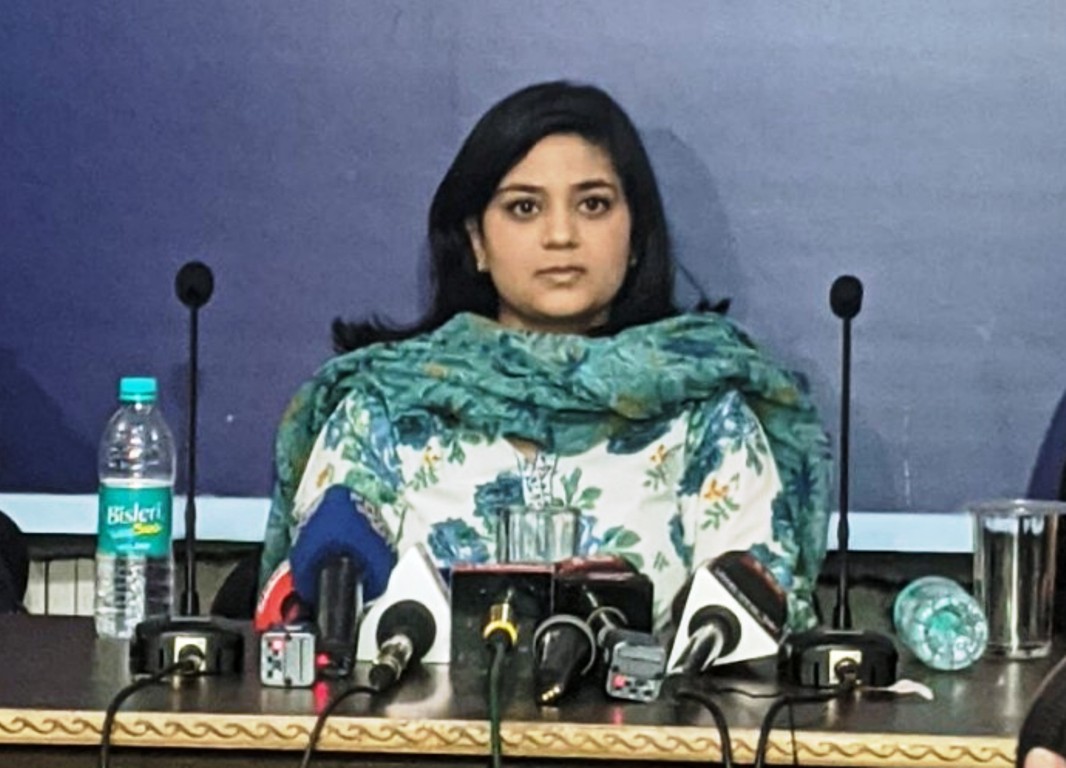SRINAGAR: Dr Amir Maqbool, Assistant Professor Zoology, has achieved notable advancements in the field of photomicrography, gaining acknowledgment as the sole representative from Jammu and Kashmir to be featured in the Nikon Small World Competition: The Microscopic Marvels.
His recognition came in the category of the “Image of Distinction.”
His exceptional talent and dedication to capturing the intricate beauty of microscopic specimens have not only earned him a place among the competition’s distinguished images but also established him as a trailblazer in the field of scientific photography.

Dr Maqbool’s contributions showcase the intersection of art and science, shedding light on the often-overlooked marvels of the microscopic world and exemplifying the importance of visual communication in scientific research. His achievements not only bring pride to his academic institution but also inspire aspiring scientists and photographers alike to explore the wonders that lie beyond the naked eye.
Dr Amir said these photographic curiosities have been a lifelong hangover for him since childhood. “My father used to be in the seed business. He used to export vegetable seeds from Kashmir to countries outside India. Since there was no such thing as photography in Kashmir at the time, he brought the first DSLR camera back from Bangalore,” he said. “This was sometime in the 1990s, when I was in the fifth or sixth grade, and it was the first time I had held a camera in my hands. Thus, I began taking wildlife and bird photographs for the first time in 2009.”
“I had an appointment in 2014 in the Zoology Department, University of Kashmir as curator, museum curator. So, I worked there from 2014 to 2017. In 2017, I got an appointment in Higher Education as an Assistant professor. So, the new genre all started at Kashmir University. In 2014, when I got selected in the university, for the curator job the curator’s work is that he has to take care of all the animals there,” he said.
He added: “In Kashmir, we feel that insects don’t have a significant role. There are two reasons for this. Normally, there is no article about insects in our newspapers or magazines. There is no such article about insects, the climate change on insects.”
Dr Amir said that the negative economic importance of insects is that they bite. All these things come to mind and develop negatively.
“When we look at it scientifically, the whole world is pollinated. These are called ecosystem drivers. Whether it is pollination. The pollinators pollinate our orchards. Fruits are made, and vegetables are made. The pollination of flowers cannot be done without them. They do the maximum or decomposers. If there is a carcass or organic matter somewhere, if it is not there, then its stink will spread everywhere and it will remain like this or even the dead bodies, which are buried. So the first job is done by insects. They do it in small pieces. Then their maggots and larvae eat it. We have their medicinal uses and almost the whole world is run by them. But one problem is that they are so small that they are not visible,” he said.
Talking about the impact of climate change on insects he said, “In Kashmir, insects are also experiencing the effects of climate change, yet there is a lack of comprehensive study. When you engage in micro or macro photography and capture these images, along with detailed explanation about their functions and significance, it facilitates future research and aids in preserving scientific records of extinct and endangered insects.”
Regarding his journey into microphotography, he explained, “I did online research on how to do microphotography and joined a group of very talented people on Facebook to get connected to and participate in this prestigious competition. While I didn’t make it to the top 20 images, I was pleased to see my images listed in the Distinguished Images category, especially considering there were approximately 1,900 entries from 72 countries.” (KNO)















